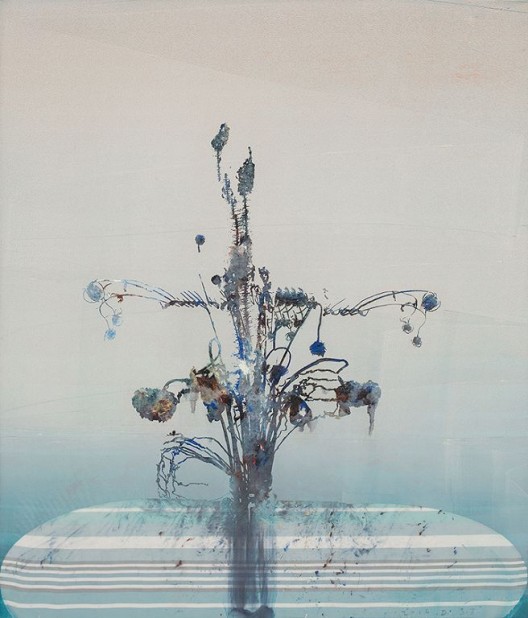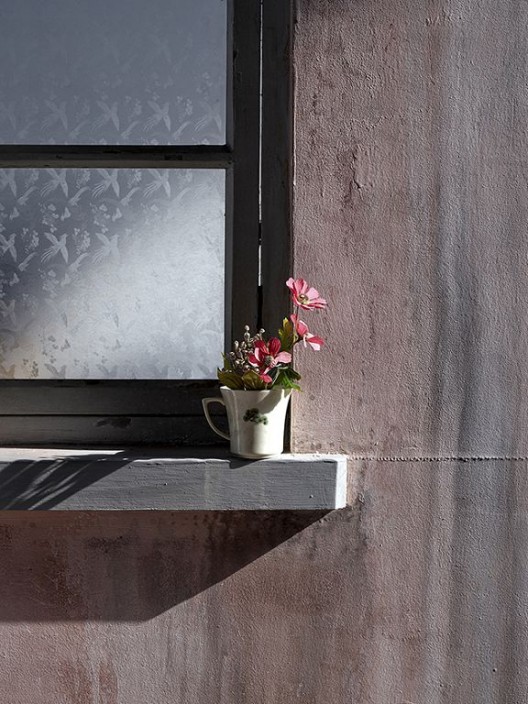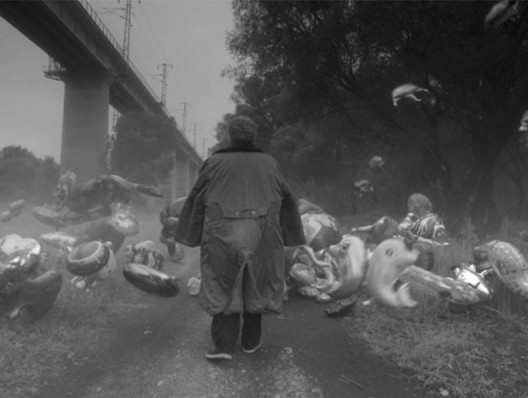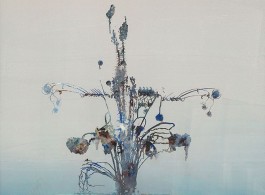‘Going and Coming’
Blindspot Gallery, Hong Kong
Jiang Zhi’s most recent solo exhibition, “Going and Coming”, is the artist’s reflection on his personal situation and the cyclicality of life. Creating two newly made series that consist of the paintings of Going-and-coming and the photography of Fade, Jiang Zhi uses the myriad formal and material iteration of flowers as the primary subject for a wide range of experimentation. Shown alongside these two series is an immersive four-channel video, In the Wind, which visualises the vehement struggles of individuals against mighty odds. The ensemble of works explores the themes of temporality and impermanence of life, articulating the paradox of material and perception, suffering and experience.

Jiang Zhi, “Going-and-coming 2016-06″, 2016, Oil on polyester, 83 x 71 cm
(Image courtesy of artist and Blindspot Gallery)
Going-and-coming and Fade aim to recombine and restructure the flowers used in Love Letters, Jiang’s iconic photographic series from 2010-2016. Poignantly highlighting the inevitable transience of blooming flowers, Jiang created the Love Letters series by dousing different kinds of living flowers with alcohol, setting them ablaze, and capturing the split second when petals and flame coexisted in equanimity.
In the Going-and-coming series, the artist utilises the dried flowers left from Love Letters and captures the different moments when they move about on a spinning table, suspended in a temporal series of movement and fragments, ever returning and reincarnating. Engaging with the materiality of oil pigment and the porousness of silk screens, the artist composes the painting in verso and recto, and disrupts the illusion of coherence and linearity. These flowers thus achieve a second life through the reappearance of heterogeneity through the representation of homogeneity, purporting a way to perceive the organic multiplicity of life.

Jiang Zhi, “Fade 12″, 2016-2017, Archival inkjet print, 200 x 150 cm (Edition of 3 + 2AP), 100 x 75 cm (Edition of 6 + 2AP)
(Image courtesy of artist and Blindspot Gallery)
In the Fade series, the artist replaces the real and transient subjects in Love Letters with acrylic, silk and glass flowers that are artificial, seemingly permanent, and ever-green, though showing traces of dust and time. By reconstructing the décor of a common Chinese household in the 1980s, the artist allegorises the foregone epochal aestheticism and romantic imagination of a good life. This vision stands as a stark contrast to our present age, where one enjoys an ever-accelerating pace of change and volatility, yet foregoing a safe space to deposit one’s feelings and desires. This also reveals the artist’s meditation on classical Chinese philosophy, that things are “neither new nor old, neither leaving nor coming”.
The four-channel video, In the Wind, consists of four interweaving scenes, “Sisyphus’s boulder”, “Father’s back”, “Shifting trees”, and “Tempest”. As the endlessly shrill winds subsume all the suffering, misfit, loneliness and fluctuation of being, time passes in its sheer violence and annihilation. The indescribability of the wind characterizes the individual’s ontology and destination, which are uncertain, irretrievable and untraceable.
The artist will be present at the opening reception. Interviews are welcome and can be arranged.

Jiang Zhi, “In the Wind (still)”, 2016, Four-channel video, 3’05” / 2’58” / 2’31” / 7’33”
(Image courtesy of artist and Blindspot Gallery)
About Jiang Zhi
Born in 1971 in Yuanjiang, Hunan, China, Jiang Zhi graduated from China Academy of Art in 1995. Jiang works with a wide range of media, including photography, painting, video, and installation. Consistently engaging with contemporary social and cultural issues, Jiang consciously positions himself at the intersection of poetics and sociology. Weaving familiar and mundane social experiences into his works, Jiang maintains a tension between daily existence and textual experience.
As one of the most versatile artists of his generation, Jiang Zhi’s work has been internationally recognized by institutions and art festivals, including the Guggenheim Museum (2017), OCAT Shenzhen (2016), Guangzhou Times Museum (2012), Venice Biennale (2003), and Gwangju Biennale (2002). Meanwhile, Jiang has had numerous publications, including Mu Mu (1999), Shine Upon Me (2008), Neurosis and Prattle (2008), On the White (2008), Tremble (2010), If This is a Man (2012), Love Letters (2015), Love-Addict (2016), and One is All, All is One, All, Predestiny (2017). Jiang was awarded the Chinese Contemporary Art Award (CCAA) in 2000.
Jiang currently lives and works in Beijing, China.
About the curator Leo Li Chen
Leo Li Chen is an independent curator and researcher based in Hong Kong with a research focus on Chinese contemporary art. Chen is also a research fellow in City University of Hong Kong. His main research interests focus on spatial and aesthetic politics, the moving image and artistic interventions in Chinese cities. His recent curatorial exhibitions include “Adrift” (OCAT, Shenzhen, 2016), “That Has Been, and Maybe Again” (Para Site, Hong Kong, 2016) and “After Party: Collective Dance and Individual Gymnastics” (Blindspot Gallery, 2017). Chen is a long-term contributing writer for Artforum, Leap, The Art Newspaper Chinaand Art World.
About Blindspot Gallery
Set up in 2010, Blindspot Gallery is a Hong Kong-based contemporary art gallery. The gallery began with a primary focus on contemporary photography and image-based art, and has evolved to include diverse media in contemporary art. The gallery represents both emerging and established artists, mainly from Hong Kong and the region but also beyond.



